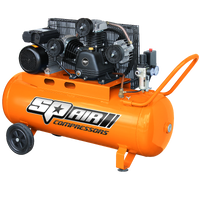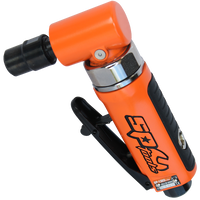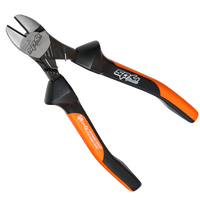Make your car sing – hear it roar. Make the puppy growl and elevate your track day experience. This guide will help enthusiasts, gearheads, and amateur racers with the right tips to select the perfect performance tyres.
By understanding the impact of tyres on safety, handling, and overall performance, you'll be able to choose tyres that maximise grip, inspire confidence, and shave seconds off your lap times – all while keeping you safe on the track.
Selecting the right performance tyres for track days
Track days are all about pushing your car's limits and your own driving skills – of finally putting your money where your mouth is. For maximum performance and, more importantly, safety, the right tyres are crucial. They are the only contact patch between your car and the track, influencing everything from grip and handling to braking distances.
The right performance tyres will inspire confidence, allowing you to attack corners harder and deduct precious seconds off your lap times, all while keeping you securely planted on the tarmac.
The impact on vehicle handling, safety, and performance
Go cheap on your track day tyres and you could be skimping on your safety and success. The right performance tyres are game changers. They'll dramatically improve your vehicle's handling, allowing for sharper turns and quicker transitions. This translates to better car control, increased confidence as you push your limits. But the benefits go beyond just feeling like a racing pro.
Performance tyres also provide superior grip, letting you accelerate harder and brake later for those crucial tenths of a second shaved-off lap times. Ultimately, the right tyres are an investment in both safety and performance, ensuring you stay glued to the track and turn in top performances.
What are performance tyres?
Performance tyres are engineered for one thing: maximising your car's capabilities on the track. Unlike standard tyres designed for everyday driving, performance tyres prioritise grip, handling, and responsiveness. They achieve this through a special blend of softer rubber compounds that provide superior traction in dry and wet conditions.
Additionally, their tread patterns often feature wider contact patches and fewer and larger tread blocks for sharper steering and better cornering. This focus on performance comes at a trade-off, though. Performance tyres typically wear out faster and may not be as fuel-efficient as standard tyres.
Key features of high-performance tyres
High-performance tyres are a breed apart, meticulously crafted to transform your car into a track weapon. Here's a breakdown of the key features that set them apart from your everyday tyres:
Tread Patterns
Forget the intricate network of grooves on regular tyres. Performance tyres have a more aggressive design with fewer and larger tread blocks. This maximises the tyre's contact patch with the track, providing superior grip for hard cornering and acceleration.
Rubber Compounds
High-performance tyres ditch the standard rubber for a softer and stickier compound. This allows the tyre to heat up faster and maintain optimal grip at high speeds. The trade-off? Softer rubber wears out quicker, so be prepared for more frequent tyre changes.
Sidewall Stiffness
Imagine your tyres as the bridge between your car and the road. In high-performance tyres, the sidewalls are stiffer than their everyday counterparts. This increased rigidity provides better lateral stability during sharp turns, allowing you to maintain control and achieve razor-sharp handling.
Speed Ratings
Not all tyres are created equal for speed. High-performance tyres boast higher speed ratings, indicating their ability to handle the increased heat generated by high-speed track driving.
Types of performance tyres
Summer Performance Tyres
These are the undisputed champions of the track. Their sticky rubber compounds excel in dry conditions, delivering the ultimate grip for aggressive driving. However, they stiffen up in cold weather and lose traction on wet surfaces, making them unsuitable for year-round use.
Winter Performance Tyres
While not ideal for track days, winter performance tyres are a necessity for cold-weather driving. Their softer rubber compounds stay flexible in low temperatures, providing superior traction on snow and ice. However, they become too soft and lose grip at high speeds, making them unsuitable for track use.
All Season Performance Tyres
As the name suggests, these tyres attempt to bridge the gap. They offer a compromise between summer and winter performance, providing decent grip in both dry and wet conditions. However, they won't match the extreme grip of dedicated summer or winter tyres, and their handling might not be as sharp on the track.
Factors to consider when choosing performance tyres
The right set of performance tyres can transform your track day experience. But with so many options available, selecting the best performance tyres can seem daunting. Here's a breakdown of key factors to consider:
Tyre Size and Compatibility
This might seem obvious, but it is crucial. Your tyres need to be the exact size specified for your vehicle to ensure proper fit, performance, and safety. Consult your owner's manual or a trusted tyre professional to confirm sizing.
Tread Compound
Softer compounds offer superior grip for sharper handling and faster lap times, but they wear out quicker. Conversely, harder compounds are more durable but offer less grip.
Tread Design
High performance tyres often feature fewer and larger tread blocks to maximise contact with the track for dry conditions. However, deep grooves are needed for wet weather performance to channel water away and prevent hydroplaning. Choose a tread design that suits your typical track day weather.
Temperature and Weather Conditions
Softer compounds excel in hot weather, while they become less grippy in cold conditions. Consider the typical weather conditions at your track and choose tyres accordingly. Summer tyres are ideal for hot dry tracks, while all season performance tyres offer a compromise for varying temperatures.
Understanding the markings on tyre sidewalls
Here's a quick guide to decipher the most important markings:
Tyre Width and Aspect Ratio
This is typically displayed as a two-number combination, for example, 225/50. The first number - e.g., 225 - represents the tyre width in millimetres from sidewall to sidewall. The following number - e.g., 50 - indicates the aspect ratio, which is the tyre's sidewall height as a percentage of its width. So, in this example, the sidewall height is 50% of the tyre's width - 225mm.
Construction Type
Look for a letter following the width and aspect ratio. Most commonly, you'll see an "R" which signifies radial construction and is the dominant type in modern cars.
The importance of load index and speed rating for track performance
While tyre width, tread design, and compound grab most of the spotlight, don't underestimate the importance of load index and speed rating for track days. The load index ensures your tyres can handle the increased weight and stress of aggressive driving. Exceeding the load limit can lead to tyre failure, a surefire way to ruin your track day and potentially cause an accident.
Speed rating plays a vital role, too. Track days involve sustained high speeds, and tyres generate significant heat. A speed rating that matches or exceeds your car's capabilities ensures the tyres can handle the heat without degrading or failing, keeping you safe and in control at high speeds.
Picking the right tyre
Choosing the right performance tyres for your track day is crucial for safety, performance, and maximising your enjoyment. Consider factors like tyre size, tread compound - softer for grip and harder for wear -tread design - fewer blocks for dry grip and more grooves for wet -and weather conditions - summer tyres for hot tracks and all season for variable temperatures.
Don't forget to check the load index to ensure your tyres can handle the stress and the speed rating to match your car's capabilities for safe high-speed performance. By understanding these factors, you'll be well-equipped to select the perfect performance tyres to unleash your car's potential and conquer the track






































































































